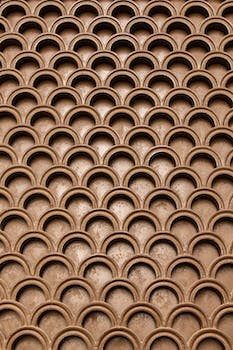Maximizing Space: Key Principles in Open-Plan Architecture
Creating a Seamless Flow: The Art of Open-Plan Architecture
Open-plan architecture has become increasingly popular in recent years, as homeowners and designers alike recognize the benefits of creating a seamless flow between living spaces. This design concept is characterized by the absence of walls or partitions, allowing for a more open and connected environment. By maximizing space and promoting a sense of unity, open-plan architecture can transform even the smallest of homes into a spacious and inviting haven.
One of the key principles in open-plan architecture is the efficient use of space. By removing walls and barriers, the available square footage is maximized, allowing for a more flexible and adaptable layout. This is particularly beneficial in smaller homes, where every inch of space is valuable. In addition, the absence of walls can create the illusion of a larger area, making the home feel more spacious and airy.
Another important aspect of open-plan architecture is the emphasis on natural light. By eliminating walls, natural light can flow freely throughout the space, reducing the need for artificial lighting and creating a brighter, more welcoming atmosphere. This not only enhances the aesthetic appeal of the home but also has practical benefits, such as reducing energy consumption and promoting a healthier living environment.
In order to create a seamless flow between spaces, it is essential to consider the layout and arrangement of furniture and fixtures. Open-plan architecture encourages the use of multi-functional furniture, which can serve multiple purposes and be easily rearranged to suit different needs. For example, a large dining table can double as a workspace, while a sofa can be transformed into a comfortable bed for overnight guests. This flexibility allows homeowners to make the most of their available space and adapt their living environment to suit their changing needs.
Another key principle in open-plan architecture is the use of consistent design elements throughout the space. This can include the use of similar materials, colors, and textures, which help to create a sense of cohesion and unity. By maintaining a consistent design theme, the various areas within the open-plan space can feel connected and harmonious, rather than disjointed and chaotic.
In addition to the aesthetic benefits, open-plan architecture also promotes social interaction and a sense of community within the home. By removing barriers between living spaces, family members and guests can easily engage with one another, fostering a more inclusive and welcoming atmosphere. This can be particularly beneficial for families with young children, as it allows parents to keep an eye on their little ones while still being able to engage in other activities.
However, it is important to strike a balance between openness and privacy when designing an open-plan space. While the absence of walls can create a sense of connection, it can also result in a lack of privacy and quiet areas for relaxation or concentration. To address this issue, designers can incorporate subtle partitions or screens, which can provide a degree of separation without completely closing off the space. Alternatively, the strategic placement of furniture and fixtures can help to define different zones within the open-plan layout, allowing for both communal and private areas.
In conclusion, open-plan architecture offers a multitude of benefits, from maximizing space and promoting a sense of unity to encouraging social interaction and fostering a welcoming atmosphere. By adhering to key principles such as efficient space utilization, consistent design elements, and a balance between openness and privacy, homeowners and designers can create a seamless flow that transforms the living environment into a spacious and inviting sanctuary.
Blending Functionality and Aesthetics: Open-Plan Design Strategies

Creating a Seamless Flow: The Art of Open-Plan Architecture
Open-plan architecture has become increasingly popular in recent years, as homeowners and designers alike recognize the benefits of creating spaces that are both functional and aesthetically pleasing. By removing walls and barriers, open-plan designs allow for a seamless flow between different areas of a home or building, fostering a sense of connection and unity. This approach to architecture not only maximizes the use of available space but also encourages social interaction and collaboration. In this article, we will explore some key strategies for achieving a successful open-plan design that blends functionality and aesthetics.
One of the most important aspects of open-plan architecture is the careful consideration of sightlines. By ensuring that different areas of a space are visually connected, designers can create a sense of continuity and flow. This can be achieved through the strategic placement of furniture, the use of glass or transparent materials, and the incorporation of open shelving or other storage solutions that allow for visibility between spaces. Additionally, maintaining a consistent color palette and design theme throughout the open-plan area can further enhance the sense of cohesion.
Another crucial element of open-plan design is the effective use of lighting. In order to create a comfortable and inviting atmosphere, it is essential to incorporate a variety of lighting sources that cater to different needs and moods. Ambient lighting, such as recessed ceiling lights or floor lamps, can provide a soft, even glow that fills the entire space. Task lighting, on the other hand, should be focused on specific areas where activities such as reading, cooking, or working take place. Finally, accent lighting can be used to highlight architectural features or artwork, adding depth and interest to the overall design.
In addition to lighting, the choice of flooring materials can also play a significant role in creating a seamless flow in open-plan spaces. By using the same flooring material throughout the entire area, designers can create a sense of unity and continuity. However, it is also possible to subtly differentiate between different zones by using variations in color, pattern, or texture. For example, a hardwood floor in a living area could transition into a tiled floor in the kitchen, with the use of a coordinating area rug to help define the separate spaces.
Furniture placement is another key consideration in open-plan design. Rather than relying on walls to define separate areas, furniture can be used to create distinct zones for different activities. For example, a large sectional sofa can be used to delineate a living area, while a dining table and chairs can establish a separate dining space. It is important to ensure that there is enough space between furniture pieces to allow for easy movement and circulation, as well as to maintain clear sightlines between different areas.
Finally, the incorporation of natural elements can greatly enhance the overall aesthetic of an open-plan space. Large windows or glass doors can help to bring the outdoors in, providing ample natural light and views of the surrounding landscape. Indoor plants can also be used to add a touch of nature and improve air quality, while natural materials such as wood, stone, and textiles can contribute to a warm and inviting atmosphere.
In conclusion, the art of open-plan architecture lies in the careful blending of functionality and aesthetics. By considering factors such as sightlines, lighting, flooring, furniture placement, and the incorporation of natural elements, designers can create spaces that are both practical and visually appealing. With its emphasis on connection and flow, open-plan design offers a modern and versatile approach to architecture that is well-suited to contemporary lifestyles.
Navigating Open-Plan Living: Tips for Seamless Flow and Cohesion
Creating a Seamless Flow: The Art of Open-Plan Architecture
Open-plan architecture has become increasingly popular in recent years, as homeowners and designers alike recognize the benefits of creating spacious, light-filled interiors that encourage social interaction and a sense of unity. By breaking down the barriers between traditional room divisions, open-plan living spaces can be both functional and aesthetically pleasing, offering a sense of freedom and flexibility that is particularly well-suited to modern lifestyles. However, achieving a seamless flow and cohesion in an open-plan environment can be challenging, as it requires careful planning and attention to detail. In this article, we will explore some tips and strategies for navigating open-plan living and creating a harmonious, well-balanced space.
One of the key principles of open-plan architecture is the idea of visual continuity, which can be achieved through the use of consistent design elements and materials. By selecting a cohesive color palette and incorporating similar textures and finishes throughout the space, it is possible to create a sense of unity and harmony that helps to tie the various areas together. This can be particularly important in larger open-plan spaces, where the risk of the different zones feeling disjointed or disconnected can be greater. In addition to color and texture, consider using consistent flooring materials and lighting fixtures to further enhance the sense of continuity.
Another important aspect of open-plan living is the effective use of space, which can be achieved through careful zoning and furniture placement. By clearly defining the different functional areas within the open-plan layout, it is possible to create a sense of order and structure that helps to guide the flow of movement and activity. This can be achieved through the use of area rugs, which can help to visually anchor furniture groupings and create a sense of intimacy within larger spaces. Similarly, the strategic placement of furniture can help to create natural pathways and circulation routes, ensuring that the space remains easy to navigate and free from obstructions.
In addition to zoning and furniture placement, the use of architectural features and design elements can also play a crucial role in creating a seamless flow within an open-plan space. For example, the incorporation of half-walls or room dividers can help to subtly delineate different areas without completely closing them off, allowing for a sense of privacy while still maintaining the overall openness of the layout. Similarly, the use of glass partitions or sliding doors can help to create a sense of separation between spaces, while still allowing for visual connectivity and the free flow of light.
One of the potential challenges of open-plan living is the issue of noise and acoustics, as the lack of walls and barriers can result in increased sound transmission between different areas. To address this issue, consider incorporating soft furnishings and materials that can help to absorb sound and reduce echo, such as upholstered furniture, curtains, and rugs. Additionally, the strategic placement of bookshelves or other storage units can help to create natural sound barriers, helping to improve the overall acoustic quality of the space.
In conclusion, creating a seamless flow and cohesion in an open-plan living environment requires a thoughtful and considered approach to design and layout. By focusing on visual continuity, effective zoning, and the strategic use of architectural features and materials, it is possible to create a harmonious and well-balanced space that is both functional and aesthetically pleasing. With careful planning and attention to detail, open-plan architecture can offer a truly unique and inspiring living experience that is perfectly suited to modern lifestyles.
Q&A
Question 1: What are the key elements to consider when designing an open-plan architecture?
Answer: The key elements to consider when designing an open-plan architecture are spatial organization, functionality, lighting, and visual continuity.
Question 2: How can furniture placement help in creating a seamless flow in open-plan spaces?
Answer: Furniture placement can help create a seamless flow in open-plan spaces by defining functional zones, maintaining visual continuity, and ensuring unobstructed pathways for movement.
Question 3: What role does lighting play in enhancing the flow of open-plan architecture?
Answer: Lighting plays a crucial role in enhancing the flow of open-plan architecture by creating a comfortable ambiance, highlighting focal points, and ensuring smooth transitions between different functional areas.
Conclusion
In conclusion, open-plan architecture is an art form that focuses on creating seamless flow within a space, enhancing functionality, and promoting social interaction. By eliminating unnecessary walls and barriers, this design approach allows for better use of natural light, improved circulation, and a more flexible layout. Ultimately, open-plan architecture fosters a sense of openness and connection, making it an increasingly popular choice for modern living and working environments.


